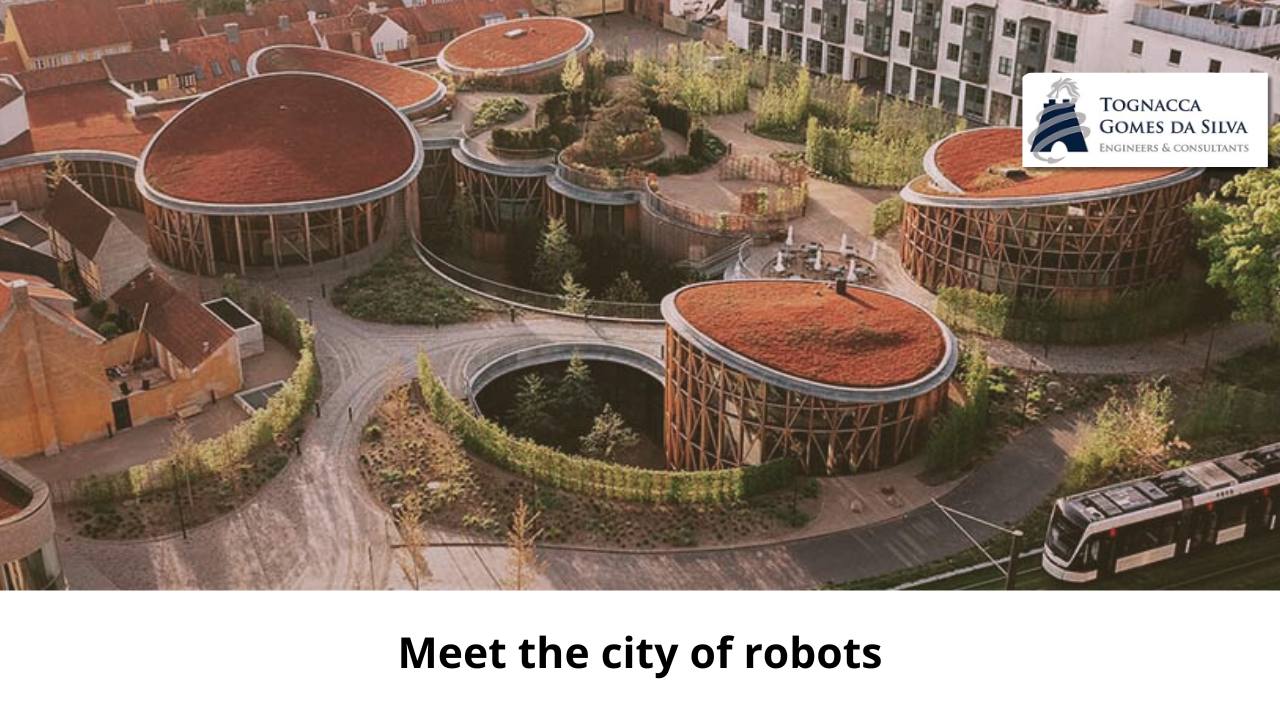Visitors to Odense, Denmark, come to the city for its rich history and culture: It’s where King Canute, Denmark’s last Viking king, was assassinated in the 11th century, and where, some 700 years later, the renowned fairy-tale writer Hans Christian Andersen was born. But today, Odense (population just over 210,000) is also home to more than 150 robotics, automation and drone companies. The city is particularly famous for its collaborative robots, or cobots—machines designed to work side by side with humans, often in industrial settings. Robotics is a “cherished industry” for the city, says Mayor Peter Rahbæk Juel, and a sector in which its citizens are proud.
The success of robotics in Odense has roots in the traditional shipbuilding industry. In the 1980s, Mærsk Group’s Lindø shipyard faced growing competition from Asia and approached the University of Southern Denmark for help developing welding robots that would improve the efficiency of the shipbuilding process. Niels Jul Jacobsen, then a student, recalls jumping at the chance to join the project; he had wanted to work with robots ever since he was a teenager watching Star Wars. But, he says, “in Denmark, it didn’t seem like a possibility. There was no activity like that.”
This began to change with the partnership between the shipyard and the university. In the 1990s, this relationship received a major boost when the foundation behind the shipping company Mærsk funded the creation of the Mærsk Mc-Kinney Møller Institute (MMMI), a center dedicated to the study of autonomous systems. The Lindø shipyard eventually shut down its robotics program, but research continued at the MMMI. Students would gather at the institute to study robotics. It was there that three researchers came up with the idea of creating a lighter, more flexible, and easier-to-use industrial robotic arm. This idea gave rise to a startup called Universal Robots, Odense’s first major robotics success story. In 2015, American semiconductor testing giant Teradyne acquired Universal Robots for $285 million. This was a significant turning point for the city’s robotics industry. It was proof, according to co-founder Kristian Kassow, that an Odense robotics company could succeed without being tied to a specific project, like the previous work at the shipyard. The sale was a sign of legitimacy that brought more recognition, talent and investment to the local robotics ecosystem.
Kim Povlsen, president and CEO of Universal Robots, says Teradyne’s decision to keep its headquarters in Odense was key to preserving the Danish work culture, which he describes as non-hierarchical and highly collaborative. This culture extends beyond the company walls, with employees often willing to share their knowledge with other industry professionals in the city. “It’s like a symbiotic system, and it works really well,” he says. Universal Robots positions itself as a platform company, not just a manufacturer, inviting other companies to work with its technology to develop robotic solutions for different industries. Its robotic arms can be found in auto parts factories, construction sites, pharmaceutical labs and wine bottling lines. This strategy is driving the company’s growth and creating opportunities for local startups.
In 2018, Teradyne acquired a second Odense robotics startup, Mobile Industrial Robots, founded by Jacobsen, a Star Wars fan who worked on the development of ship-welding robots during his university years. The company makes robots for indoor transportation, such as those used to load pallets or tow carts in warehouses. The sale allowed Jacobsen to invest in other robotics projects, including Capra, a maker of outdoor mobile robots, where he now serves as CEO.
The success of these two large robotics companies, which together employ about 800 people in Odense, has created a ripple effect, bringing funding and business expertise to the city’s robotics hub, says Søren Elmer Kristensen, CEO of the government-funded organization Odense Robotics.
There are challenges to being located in a city that, despite being Denmark’s third-largest, is undeniably small on the global stage. Attracting investment is one of them. Most investment still comes from within the country. Finding talent is another hurdle; the demand for highly skilled tech professionals outstrips the supply. Kasper Hallenborg, director of MMMI, says the institute feels a responsibility to produce enough graduates to meet the needs of local industry. Even so, he points out that there are still too few women and girls entering STEM (science, technology, engineering and mathematics) fields, so MMMI supports programs aimed at primary school students to strengthen this talent pipeline. However, as Odense’s robotics hub grows, it has become easier to attract international talent. For them, the risk of relocating is lower, as there are plenty of companies hiring if a job doesn’t work out.
And Odense’s small size can have its advantages. Mayor Juel highlights the drone testing facility at Hans Christian Andersen Airport, which, due to relatively low air traffic, can offer ample flight time. The airport is one of the few that allows drones to fly beyond the operator’s line of sight.
The shipyard, once the city’s main employer, closed completely shortly after the 2007-2008 financial crisis, but has recently been transformed into an industrial park focused on manufacturing large structures such as solid steel monopiles. The university is currently building a center to develop automation and robotics for this type of work. If you visit Odense today, you might not see ships, but rather giant offshore wind turbines – assembled, of course, with the help of robots.
( fonte: MIT Technology Review)



